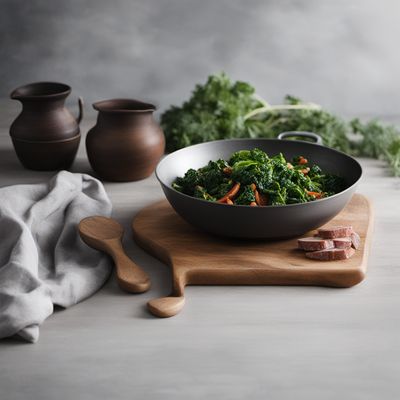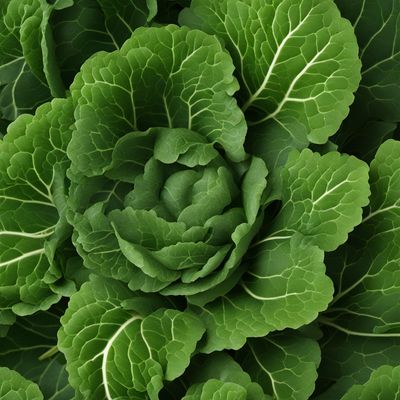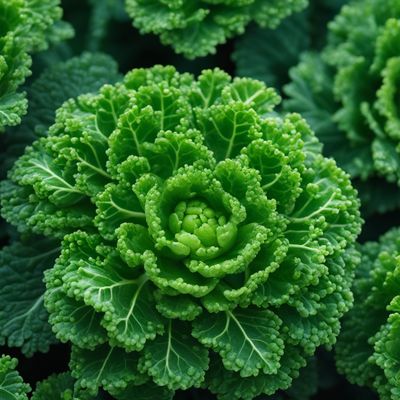
Ingredient
Jersey kales
The Verdant Powerhouse of Nutrition
Jersey kales are characterized by their dark green, curly leaves and sturdy stems. They have a slightly bitter and earthy taste, with a crisp texture that softens when cooked. These nutrient-packed greens are a staple in many cuisines and can be enjoyed raw in salads, sautéed as a side dish, or incorporated into soups, stews, and stir-fries.
Origins and history
Jersey kales have a long history dating back to ancient Greece and Rome, where they were highly valued for their medicinal properties. They were later introduced to the British Isles, including the island of Jersey, where they gained popularity and became known as Jersey kales. Today, they are cultivated worldwide and are renowned for their exceptional nutritional content.
Nutritional information
Jersey kales are a nutritional powerhouse, packed with vitamins A, C, and K, as well as folate, calcium, and fiber. They are also rich in antioxidants and phytonutrients, which contribute to their numerous health benefits.
How to select
When selecting Jersey kales, look for vibrant, dark green leaves that are crisp and free from wilting or yellowing. Avoid leaves that appear limp or have brown spots. Smaller leaves tend to be more tender and milder in flavor. Opt for organic or locally grown varieties whenever possible to support sustainable farming practices.
Storage recommendations
To maintain the freshness of Jersey kales, store them in a plastic bag or airtight container in the refrigerator. They can stay fresh for up to a week. Avoid washing the leaves before storing, as excess moisture can cause them to wilt more quickly.
How to produce
Jersey kales can be easily grown in home gardens or containers. They thrive in cool weather and can tolerate frost, making them an excellent choice for fall and winter gardens. Sow the seeds directly in well-drained soil and provide regular watering. Harvest the outer leaves as needed, allowing the inner leaves to continue growing.
Preparation tips
Before using Jersey kales, remove the tough stems and ribs, as they can be fibrous and chewy. The leaves can be enjoyed raw in salads, massaged with a dressing to soften their texture. They can also be sautéed with garlic and olive oil, steamed, or added to soups, stews, and stir-fries for a nutritious boost. Blending them into smoothies or juicing them with other fruits and vegetables is another popular way to incorporate their health benefits into your diet.
Culinary uses
Jersey kales are widely used in various cuisines around the world. They are commonly used in salads, either as the main ingredient or as a flavorful addition. They can also be sautéed with garlic and chili flakes for a simple and nutritious side dish. In Italian cuisine, they are a key ingredient in dishes like minestrone soup and pasta e fagioli. Additionally, they can be incorporated into smoothies, pesto, and even baked into crispy kale chips.
Availability
Jersey kales are cultivated and available in many regions worldwide, including North America, Europe, and Asia. They are commonly found in grocery stores, supermarkets, and farmers markets, especially during the cooler months.
More ingredients from this category
Recipes using Jersey kales

Creamy Saffron Carrot Ice Cream (Havij Bastani)
Golden Delight: Creamy Saffron Carrot Ice Cream

Andorran Kale and Sausage Stew
Mountain Delight: Andorran Kale and Sausage Stew

Bangladeshi-inspired Doberge Cake
Spiced Layers of Delight: A Fusion of American Doberge Cake and Bangladeshi Flavors

New Orleans Style Banana Pudding
Creole Delight: New Orleans Style Banana Pudding



